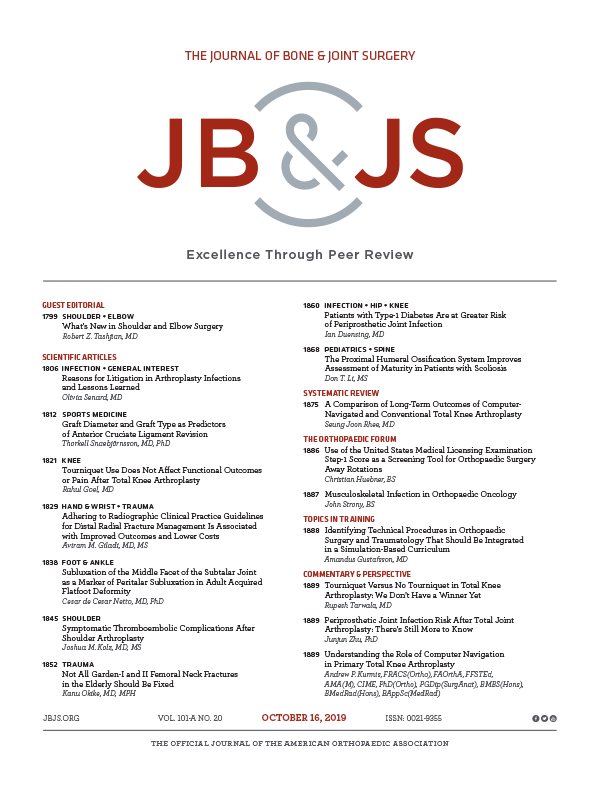
Lumbar plexus block vs periarticular infiltration with ropivacaine or liposomal bupivacaine in THA

Lumbar plexus block vs periarticular infiltration with ropivacaine or liposomal bupivacaine in THA
Continuous Posterior Lumbar Plexus Nerve Block Versus Periarticular Injection with Ropivacaine or Liposomal Bupivacaine for Total Hip Arthroplasty: A Three-Arm Randomized Clinical Trial
J Bone Joint Surg Am. 2017 Nov 1;99(21):1836-1845Did you know you're eligible to earn 0.5 CME credits for reading this report? Click Here
Synopsis
165 patients scheduled for total hip arthroplasty were randomized to one of three groups for postoperative analgesia: periarticular infiltration with ropivacaine (PAI-R), periarticular infiltration with liposomal bupivacaine (PAI-L), or peripheral nerve block (PNB) via a continuous lumbar plexus block. The primary outcome was maximum pain severity experienced during the morning of postoperative da...
To view the full content, login to your account,
or start your 30-day FREE Trial today.
FREE TRIAL
LOGIN
Forgot Password?
Explore some of our unlocked ACE Reports below!

Learn about our AI Driven
High Impact Search Feature
Our AI driven High Impact metric calculates the impact an article will have by considering both the publishing journal and the content of the article itself. Built using the latest advances in natural language processing, OE High Impact predicts an article’s future number of citations better than impact factor alone.
Continue



 LOGIN
LOGIN

Join the Conversation
Please Login or Join to leave comments.